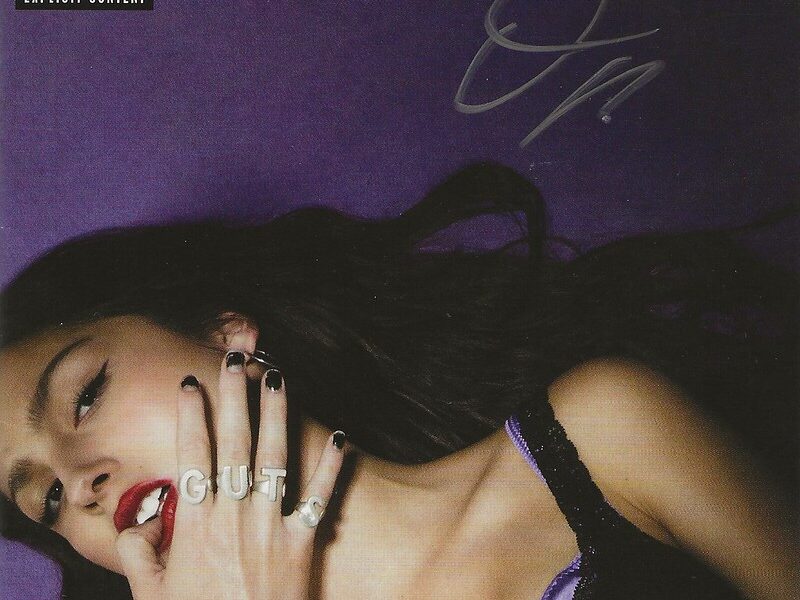Unapologetic, transgressional, and bold, punk has served to elevate art and scream “resistance” since the late sixties and early seventies. But punk is more than music; it encompasses visual art, written word, and so much more, which means poetry is woven into the fabric of the early American and British punk movements. To celebrate the punk lit, the countercultural, and the experimental, we’ve made a list of the six most influential punk icons who brought poetry into the punk scene.
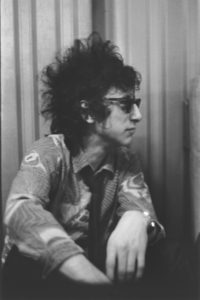
John Cooper Clarke, Cardiff, 1979
John Cooper Clarke
This English performance poet rose to fame during the 70s punk rock era. Inspired by his English Teacher John Malone and English poet Pam Ayres, Clarke began his performance career by working with bands in Manchester folk clubs. Affectionately known as “the bard of Salford,” the poet is known for his rapid-fire a capella performance style. His recording “Evidently Chickentown” was even featured in The Sopranos. In 2013, he was awarded an honorary doctorate of arts in “acknowledgment of a career which has spanned five decades, bringing poetry to non-traditional audiences and influencing musicians and comedians” by the University of Salford.
Patti Smith
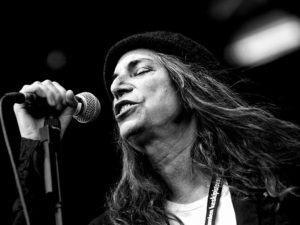
Photo by Beni Kohler
With her 1975 debut album, Horses, Patti Smith became a household name and the “punk poet laureate” of her generation. Her ability to fuse rock and poetry in her work earned her a spot in the Rock and Roll Hall of Fame, 47th place in the Rolling Stone’s list of 100 Greatest Artists, a Polar Music Prize, and a position of Commander of the Ordre des Arts et des Lettres by the French Ministry of Culture. An early member of the St. Mark’s Poetry Project, Smith spent much of the seventies painting, writing, and performing. St. Mark’s soon became the site of her historic debut poetry reading, accompanied by Lenny Kaye on guitar. It was also where Smith came into contact with the members of what would become the Patti Smith Group, eventually releasing the Horses album and launching Smith into mainstream fame.
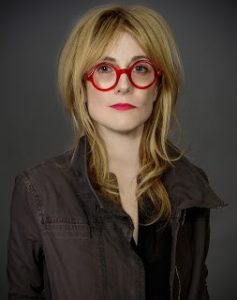
Photo by Annie Watts
Gillian McCain
This Canada-born author literally wrote the book on punk, Please Kill Me: The Uncensored Oral History of Punk, with the help of American music journalist Legs McNeil. In addition, McCain is the author of two widely successful books of poetry: Tilt (1996) and Religion (1999). Praised for its “chatty and detached style,” Tilt provides an inside look at McCain’s experience within the New York School of Poetry and her daily life, albeit chaotic. Religion offers a similarly immediate, playful-yet-serious prose while dismantling ideas of naive faith within contemporary society. Today she is devoted to writing full-time, but in the nineties, she was instrumental in the New York punk poetry scene, where she served as program coordinator for the St. Mark’s Poetry Project and founded the Friday Night Series, which has brought over 400 artists to feature poetry, fiction, non-fiction, performance art, music, and more.
Richard Hell
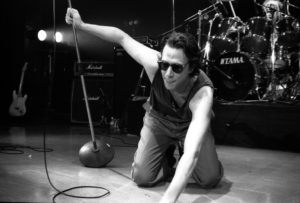
Photo by Masao Nakagami
A punk rock idol, Richard Hell set the mold for punk music and fashion with spiked hair, safety pins, and a DIY Attitude. In addition to his well-known musical endeavors, Hell’s career largely involved poetry. He first moved to New York City to become a poet as just a teen. Before turning 21, his poems were published in several magazines, including Rolling Stone and Annuals. He also created and published Dot Books during this time. His other poetry collections include I Was a Spiral on the Floor (1988) and Across the Years (1992). Hell also published a number of poems under the pseudonym Thersa Stern, a fictional character composed of Hell’s and friend Tom Verlaine’s faces in drag. A book of poems titled Wanna Go Out? was released by Dot Books under the Stern pseudonym in 1973. Since the late eighties, he’s devoted himself to writing.
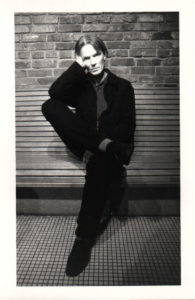
Photo by Eric Thompson
Jim Carroll
American author, poet, and punk musician, Carroll’s best-known work is probably his memoir, The Basketball Diaries, which inspired the 1995 film starring Leonardo DiCaprio. Carroll has named poets such as Frank O’Hara, James Schuyler, and Allen Ginsberg as his main influences. He published his first book, Organic Trains, as a highschooler, and was soon featured in magazines such as The World, Paris Review, and Poetry. After he began working for Andy Warhol, he published his second poetry collection, 4 ups and 1 Down. Then in 1973, he published his most mainstream collection, Living at the Movies. Carroll also spent much of this time working as a musician and even performed spoken word and musical shows with Patti Smith. Throughout his career, Carroll was very open about his struggles with addiction. Much of his work deals with these themes, and his work has left a lasting mark on the genre.
Billy Childish
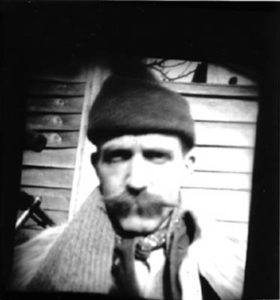
Photo by Wolf Howard
This English artist was a jack of many trades, including painting, writing, photography, film, music, and poetry. Childish led and played in many influential punk and garage punk bands, including the Pop Rivets, Thee Milkshakes, and Thee Headcoats. Much of his work is done in the confessional style and is considered prolific and explicit, detailing his love life and early childhood traumas. In 1979, he helped found The Medway Poets, a punk poetry performance group who made appearances in pubs and colleges, as well as the Kent Literature festival and the 1981 Cambridge Poetry Festival. The group, and Childish, have been mentioned as major influences for Tracey Emin. In 1981, Childish formed the independent press Hangman Books, which published the poetry of Emin, Bill Lewis, Sexton Ming, and more. Hangman Press eventually added Hangman Records in 2000, releasing spoken word and experimental punk rock tracks.




